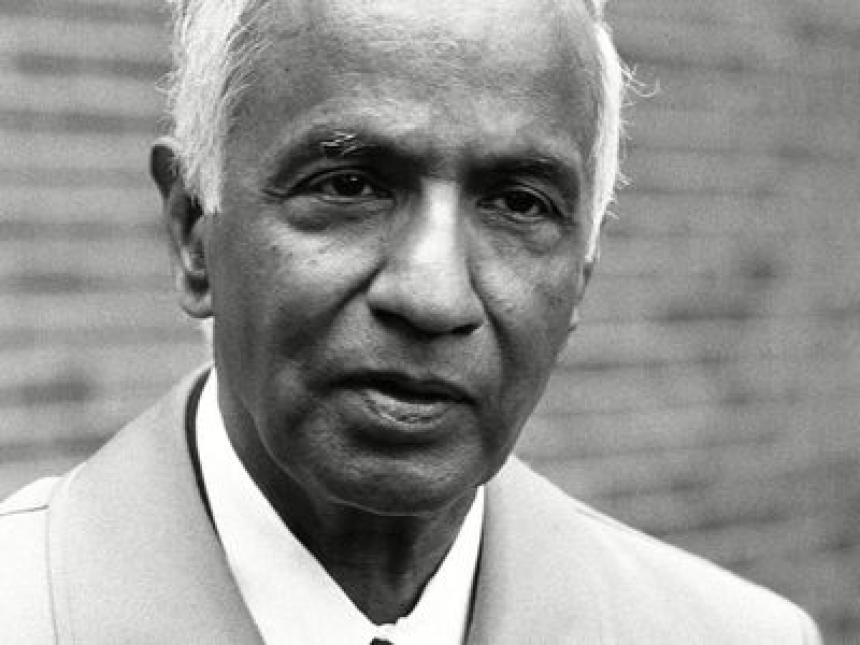
Subrahmanyan Chandrasekhar
Subrahmanyan Chandrasekhar: A Brilliant Astrophysicist
Subrahmanyan Chandrasekhar: A Brilliant AstrophysicistSubrahmanyan Chandrasekhar, born on October 19, 1910, in Lahore (now in Pakistan), was an Indian-American astrophysicist who made significant contributions to our understanding of stellar evolution, black holes, and white dwarfs. His groundbreaking work earned him numerous accolades, including the Nobel Prize in Physics in 1983. Let's delve into the life and accomplishments of this extraordinary scientist.
Early Years and EducationChandrasekhar grew up in a family that valued education. His father, Chandrasekhara Subrahmanya Ayyar, was a highly respected civil servant, and his mother, Sitalakshmi Divakaruni, was an accomplished musician and artist.
From a young age, Chandrasekhar displayed a brilliant mind and a passion for mathematics and physics. He completed his undergraduate studies in physics at Presidency College in Madras (now Chennai), where he graduated at the top of his class.
In 1930, Chandrasekhar journeyed to England to pursue his doctoral studies at Trinity College, Cambridge. There he began his groundbreaking work on stellar dynamics and theoretical astrophysics.
Chandrasekhar Limit and Stellar EvolutionOne of Chandrasekhar's most significant contributions was his discovery of the "Chandrasekhar limit." In the 1930s, he demonstrated that when a star exhausts its nuclear fuel, it can collapse under its own gravitational pull. This collapse results in a white dwarf, a dense remnant of a dying star.
Chandrasekhar's calculations showed that there is a limit to the mass a white dwarf can have before it collapses further, forming a more massive object such as a neutron star or a black hole. This limit, known as the Chandrasekhar limit, is approximately 1.4 times the mass of our Sun.
His pioneering work on the Chandrasekhar limit and stellar evolution laid the foundation for our understanding of how stars evolve and eventually die.
Career and RecognitionAfter completing his Ph.D., Chandrasekhar embarked on a remarkable academic career. He held positions at the University of Chicago, Yerkes Observatory, and the California Institute of Technology. He authored several influential books and research papers, solidifying his place as a leading astrophysicist.
In 1983, Chandrasekhar was awarded the Nobel Prize in Physics for his discoveries concerning the physical processes of importance to the structure and evolution of stars. This recognition elevated him to the highest echelons of scientific achievement.
Legacy and ImpactChandrasekhar's contributions have had a lasting impact on the field of astrophysics. His work on black holes, white dwarfs, and stellar evolution laid the groundwork for further exploration and understanding in these areas.
Even after his passing in 1995, Chandrasekhar's legacy lives on through the Chandrasekhar Prize, which is awarded by the Royal Astronomical Society to recognize astrophysical research of exceptional quality.
ConclusionSubrahmanyan Chandrasekhar was an extraordinary astrophysicist whose groundbreaking work revolutionized our understanding of the evolution of stars. His discoveries, such as the Chandrasekhar limit, continue to shape the field of astrophysics today. Chandrasekhar's legacy as a remarkable scientist and researcher lives on, inspiring future generations to push the boundaries of human knowledge.
Frequently Asked Questions1. What is the Chandrasekhar limit?The Chandrasekhar limit is the maximum mass a white dwarf can have before it collapses further, forming a more massive object such as a neutron star or a black hole. It is approximately 1.4 times the mass of our Sun.
2. What did Chandrasekhar receive the Nobel Prize in Physics for?Chandrasekhar was awarded the Nobel Prize in Physics in 1983 for his discoveries concerning the physical processes of importance to the structure and evolution of stars.
3. What is the significance of Chandrasekhar's work on black holes and white dwarfs?Chandrasekhar's work on black holes and white dwarfs established a fundamental understanding of these celestial objects. His calculations and theories laid the groundwork for further research and exploration in these areas.
4. What is the Chandrasekhar Prize?The Chandrasekhar Prize is awarded by the Royal Astronomical Society to recognize astrophysical research of exceptional quality. It honors the legacy and contributions of Subrahmanyan Chandrasekhar to the field of astrophysics.
5. How has Chandrasekhar's work impacted the field of astrophysics?Chandrasekhar's work has had a profound impact on the field of astrophysics. His discoveries and theories have expanded our understanding of stellar evolution, black holes, and white dwarfs, paving the way for further advancements and discoveries in these areas.





